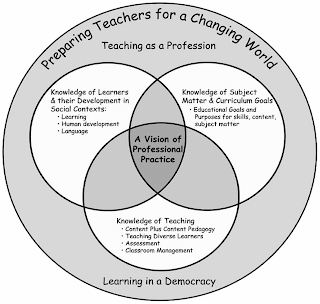By Kayhan Karli
Turkey has a long-standing tradition of educating teachers. However, it is not possible to say the same thing about their professional development, which has not been a priority in Turkey. Teacher training is defined in two major areas: pre-service training and in-service professional development for teachers. Regarded as a professional occupation, teaching requires a special training. Teacher training system is provided in three dimensions – field knowledge, professional knowledge for teachers, general knowledge – requires a well-planned and programmed educational process. Pre-service teachers or candidates (trainee teachers) receive education at Universities regulated by Higher Education Commission (YÖK) in cooperation with Ministry of National Education (MONE). In-service teacher training or professional development for teachers is regulated and directed by MONE. Half of all teachers in Turkey have never attended a training program during their professional careers. In our time, professional development of teachers is not only important but also a necessity in the future of learning because:
Globalization. It’s more than economics. Globalization is social. As we witness massive migration from underdeveloped cities/countries to more developed cities/countries, people who go through various social changes have difficulties in adapting and continuing their living habits. Learning becomes important and will occur in a multicultural setting.
Technology. Planning learning environments where learners are independent of technology is impossible. The new millennium’s student is defined as “knowledge builder, multimedia creator, collaborative learner, inquirer, experimental learner through real life and simulations, and an individual who can learn for everyone and for the sake of his/her own needs.” We have to ask “How can our teachers be efficient and competent in an environment where especially Web 2.0 technology is used widely?” Teachers won’t disappear. But they do need to use technology efficiently and design learning and its environment according to the structure of the new millennium. In other words we need teachers, who have web sites and write blogs; who can use social media tools like Facebook, Twitter etc. as a learning tool; and who can transform mobile phones into a learning tool, instead of dismissing them. Today, in an environment where even Presidents are using Twitter and conveying information firsthand; teachers who do not use new technology will stay behind of their students.
As TALIS (Teaching and Learning International Survey) results show, in Turkey, about three quarter of teachers are under 40 years old; they are the children of the digital age and they can adapt easily. This is Turkey’s competitive advantage over developed countries. In the last years, Turkish Ministry of National Education has provided all schools with Internet connection and even some village schools have computers now. Teachers, who can own the digital transformation in in-service trainings, will also be able to transform learning.
Brain and intelligence research. There are 79 faculty of education and 64 school of medicine in Turkey. But, none focus on brain and learning research. In the last quarter of the 20th century we tried to understand brain with experimental studies on mice. With the advancements in technology amazing discoveries have been made and experiments on animals have been replaced with new imaging techniques like fMRI. These discoveries showed that every individual has a unique way of learning. It is not hard to foresee that the answer to the question “How are we going to learn?” may change a lot as we learn more about our brains in the near future.
While we evaluate learning in the light of these three factors, the most important questions are: “Who is the learner? Is learning only for students or for everyone? For teachers to catch up with the new era should they concentrate on life-long learning?”
My father knew radio very well. He used television widely. He has encountered with computer recently and has been trying to comprehend it. Advancement in technology has changed how even the radio and television are used. Today, he needs the help of his grandson, my son, to be able to use the first two. My father is still learning in his 70s. But, the interesting part is he is learning from today’s children. In the figure below, which defines teaching very well, teaching as a profession is evaluated. The world is getting “smaller and more complex” so teaching has to be redefined as life-long learning as well as personal development.
Figure: A Framework for Understanding Teaching and Learning, Darling-Hammond & Bransford (2005, p. 11)
How do we do that? As Howard Gardner mentions in his new work “Five Minds for the Future”, we have to work on a learner’s profile. We have to teach individuals to master a discipline, use creative thinking, and infer strategy via synthesizing. New era’s teachers should be able to think differently, respect to differences in every sense, and behave ethically. Without forgetting that the teaching profession is a clinical one, we have to create a sustainable, hybrid, and a replicable model that will support master-apprentice, supervision, and mentoring relationships. Ogretmen Akademisi Vakfi has been training teachers from all around Turkey with this vision in mind. The goal is to establish an education system where all parties involved think critically and analyze skillfully.


